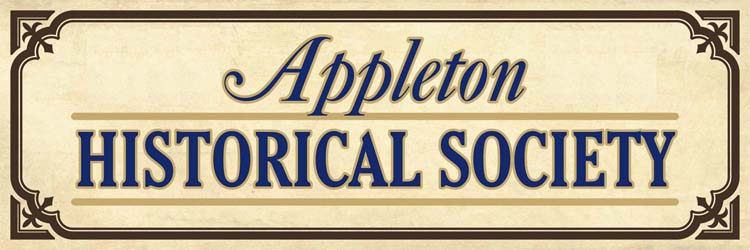PUBLIC MEETING MINUTES
Wednesday, April 12, 2017
St. Bernadette’s Catholic School
PROGRAM SUMMARY “
Native Peoples of Northeast Wisconsin”
CALL TO ORDER BY PRESIDENT TOM SUTTER
TOTAL ATTENDANCE: 94
OFFICERS AND BOARD MEMBERS IN ATTENDANCE:
Tom Sutter, Laura Leimer, Linda Muldoon, John Marx, Brian Schneider, Jim Krueger and Diana Sandberg.
Upcoming Special Events
August 13 2pm - Riverside Cemetery Walk – City Pioneers
December 2 9-12:30 History Fair at the Indoor Farmer’s Market, City Center Plaza
2017 Appleton History Speaker Series
January 11 Vulcan replica and early hydroelectricity – Tom Seidl
February 8 Appleton parades – Greg Otis
March 8 St. Joseph’s Church and School, 150 years – Jim Krueger
April12 NativeAmericans–PeterPeregrine
May 10 Appleton East High School – 50 years – Corey Otis
June14 LawrenceUniversity–ErinDix
July 12 Cloud Buick - Steve Cloud
August9 AtticTheater–BerrayBillington
September 13 Pioneer and Riverside Cemeteries – Gwen Sargeant
October11 VoecksMeatMarketandFoxValleyCoin–MichelleGriesbach
November8 TheAppletonPictureShow--Bringyourownphotosforshowandtell!
APPLETON HISTORICAL SOCIETY ORGANIZATIONAL INFORMATION:
•AHS Officers:
A.President - Thomas Sutter
B.Vice President - Gwen Sargeant
C.Secretary – James Richter
D.Treasurer – Laura Leimer
•AHS Board of Directors:
A. Terms through November 2017:
1. Mark Moderson
2. John Marx
3. Laura Leimer
4. Diana Sandberg
B. Terms through November 2018:
1. Tom Sutter
2. Christine Williams
3. James Richter
C. Terms through November 2019:
1. Linda Muldoon
2. Jim Krueger
3. Gwen Sargeant
4. Brian Schneider
Fund Raising Committee:
A. James Richter, Chairman
B. Gwen Sargeant, Vice Chairman
C. Laura Leimer, Treasurer
D. Linda Muldoon
E. Brian Schneider
F. David Buss
G. Jack Voight
Fund Raising SubCommittee-Promotions:
A. Mark Moderson, Chairman
B. Jim Krueger, Vice Chairman
C. Karen Moderson
Building and Grounds Committee:
A. John Marx, Chairman
B. Gwen Sargeant, Vice Chairman
C. Laura Leimer, Treasurer
D. James Krueger
E. Brian Schneider
Additional Committee Chairs are as follows:
A. Mark and Karen Moderson, Principal Organizers
B. Brian Schneider, Technical Resources
C. David Buss and Diana Sandberg, Research Specialists
D. Gwen Sargeant, Public Relations and Web Page
E. Christine Williams, Monthly Programs
F. Gwen Sargeant, Publications
PRESIDENT SUTTER ANNOUNCEMENTS:
*President Tom Sutter welcomed and thanked all 94 people in attendance and thanked Jim Krueger for his wonderful presentation on The 175 Year History of St. Joseph’s Catholic Church at the March meeting.
*Thanks were given to the Post Crescent and the Bargain Bulletin for their continuing publicity for the Society.
*Note was also made that two of Winston Churchill’s grandchildren will speak at Fox Valley Lutheran High School on Saturday, May 13th at 3 pm.
*The exciting announcement for the evening regarded receipt of the wonderful donation by the Langenberg Family of $25,000 towards the Society’s building fund. The Langenbergs were early residents and business people in Appleton in the 1850s and one was a founding member of St. Joseph’s Parish.
*Encouraged those attending to renew their annual membership if they haven’t yet done so.
*The Door Prize was awarded to Steve Ballard, who chose Bergstrom Car Wash Tokens.
Respectfully submitted by Thomas H Sutter, President
Reports of Officers and Board Members:
A report on one of our forthcoming fund raising events was presented by Jim Krueger. We will be doing a Beer, Wine and Cheese Event at the Grand Meridian on October 19, 2017. Called the “Toast to Appleton History” we will have multiple manufacturers and distributors displaying and offering samples of their products. Further information forthcoming as we get closer to the event.
Also presented by Jim Krueger was our new entrance sign for our 128 N. Durkee building. It reads “Appleton History Museum and Research Center”.
PROGRAM: “Native Peoples of Northeast Wisconsin”
PRESENTER: Peter Neal Peregrine
Speaker’s Background:
Peter N. Peregrine came to anthropology after completing an undergraduate degree in English. He found anthropology's social scientific approach to understanding humans more appealing than the humanistic approach he had learned as an English major. He undertook an ethnohistorical study of the relationship between Jesuit missionaries and
Native American peoples for his master's degree and realized that he needed to study archaeology to understand the cultural interactions experienced by Native Americans prior to contact with the Jesuits.
While working on his Ph.D. at Purdue University, Peter Peregrine did research on the prehistoric Mississippian cultures of the eastern United
States. He found that interactions between groups were common and had been shaping Native American cultures for centuries. Native Americans approached contact with the Jesuits simply as another in a long string of intercultural exchanges. He also found that relatively little research had been done on Native American interactions and decided that comparative research was a good place to begin examining the topic. He has since done fieldwork in England and Syria, and museum work in Kenya, China, Japan,
and India exploring the impact cross-cultural interactions have on the peoples involved. He has also conducted numerous cross-cultural studies using ethnographic materials.
Peter Peregrine is currently professor of the anthropology at Lawrence University in Appleton, Wisconsin. He serves as research associate for the Human Relations Area Files at Yale University, and is a Fellow of the American Association for the Advancement of Science. He continues to do archaeological research, and to teach anthropology and archaeology to undergraduate students.
Introduction:
Peregrine informed us that he is blessed with the opportunity to teach History as a career. One of the courses he teaches is “Natives and Newcomers in Northeast Wisconsin”. Much of what will be presented tonight will be from that course.
Power Point Presentation:
In learning about native peoples in Northeast Wisconsin, we must first understand the Western Great Lake region of our country and how Indian tribes migrated to it. Showed a map of the entire Great Lakes Basin.
Appleton was a key place for moving east and west across the continent. Appleton is located in an ecotone because of weather, growing and planting seasons. We are on the transition zones of the various forests. We were also in the center of wild game in the state.
The various native peoples (Indian Tribes) that came to our area had language and belief systems much different than Caucasian people who came to the area.
Early vegetation and wildlife attracted the Indian Tribes to our area. Forests and waters were abundant, and the types of trees and natural vegetation were very appealing. Also the abundant wild life helped a great deal, including deer, bears turkeys, and squirrels. In addition, the fur bearing animals, including muskrats, beavers, lynx, mink and otters also were an attraction.
As the Indian Tribes arrive they applied the Three Sisters Method of planting and raising crops: corn, beans and squash. Beans grow around corn stalks. Squash holds weeds down around corn.
Naturally grown fruits, nuts and berries supplemented the Indian diet.
Indian life was filled with Spiritual influences and lore. “Red Horn” was a spiritual figure in the area Indian family. Red Horn was a culture hero in Siouan oral traditions, specifically of the Ioway and Hocak (Winnebago) nations (Per Wikepedia).
There were other major parts of Indian lore that were key influences to the Indian people. Animals were significant. Also “Earth Mother” was a major player. High Cliff and Ledgeview were the home of the Evil Panthers that decimated the area.
Life changed fundamentally in the Appleton area in 1649. The Iroquois Indians drove all people on the Ontario peninsula and the Ohio Valley into northeast Wisconsin. Northeast Wisconsin was the “Jordan” of it’s day. Iroquois raiders couldn’t reach the peace loving tribes here. Menomonee and Hochunk tribes were the first tribes that developed the area.
In 1670 Caucasian people first arrived here. Kaukauna was the “Big” village in the area. Beaver and their pelts brought white man to get the pelts and make a lot of money. Men’s hats were major products made with Beaver pelts. The entire Great Lakes area was a part of the fur trade.
The Oneida peoples did not come to the area until 1823. Stories and legends supplied us with their early history in the area.
Indian villages became really well laid out communities. Many consisted of a ceremonial area in the middle surrounded by homes and businesses. Their houses were dome-shaped wickiups(wigwams) (Encyclopedia Brittanica). They consisted of frames made of small pole stock woven together. They were covered and enclosed with mats or the bark of trees.
James L. Richter , AHS Secretary, 4/22/17

